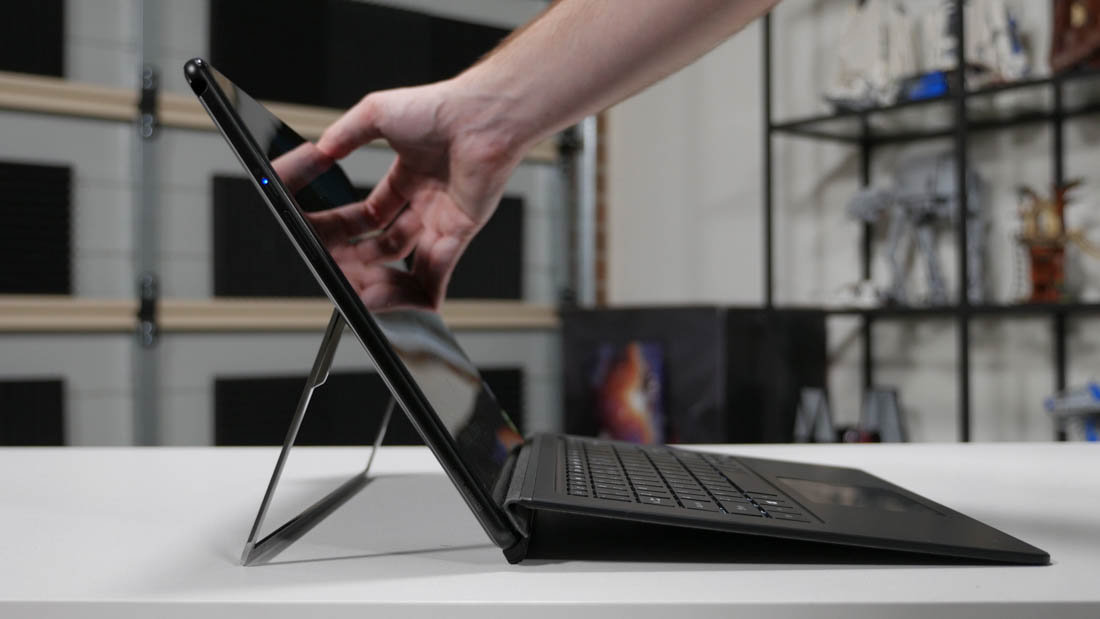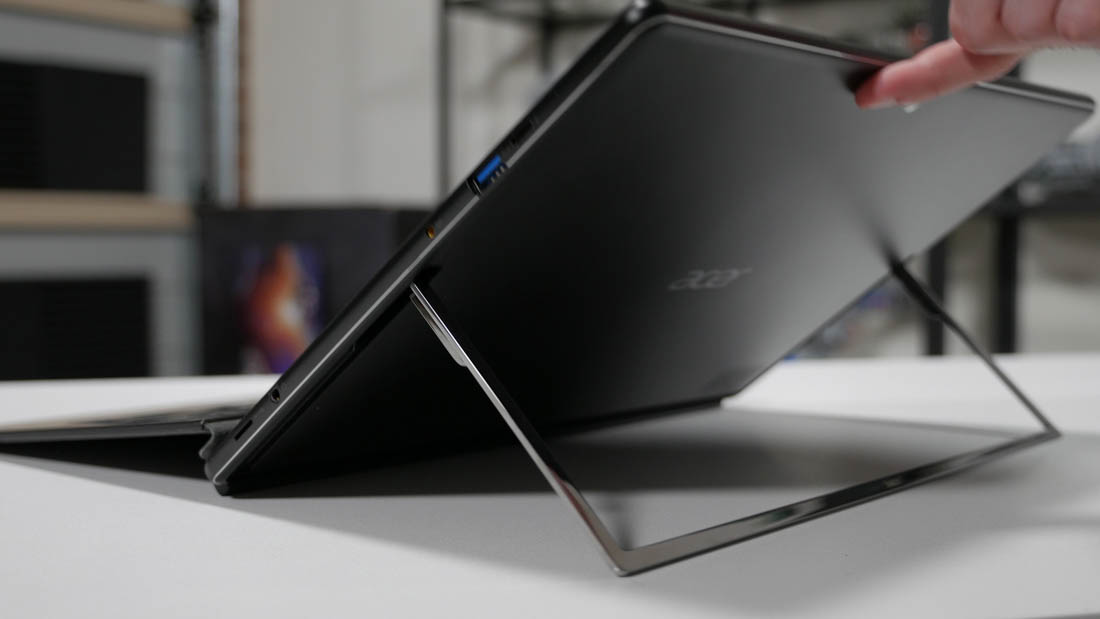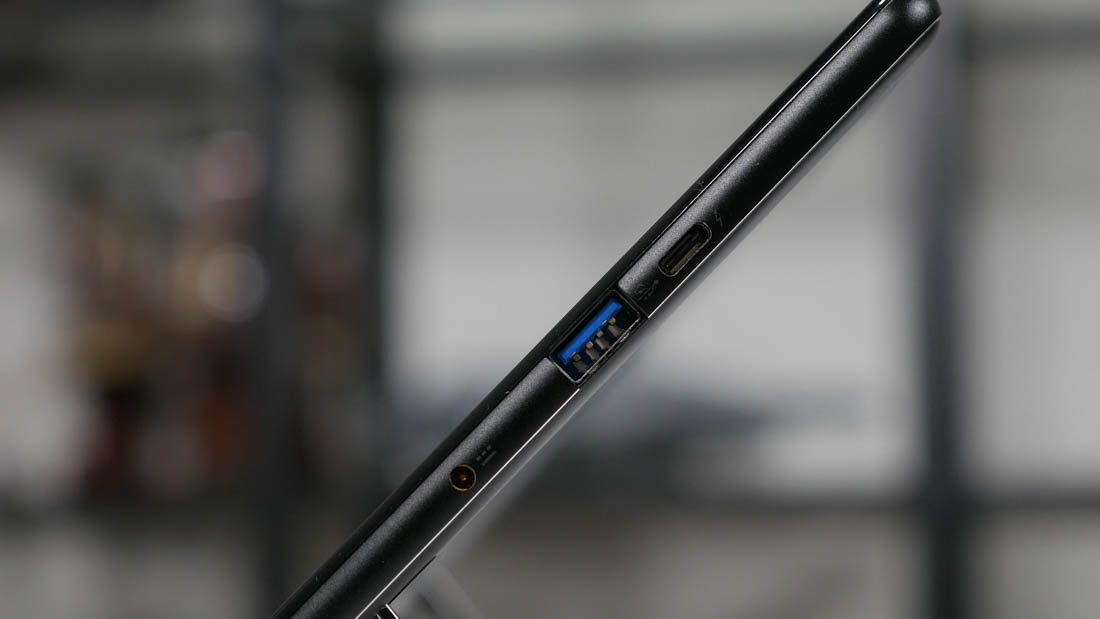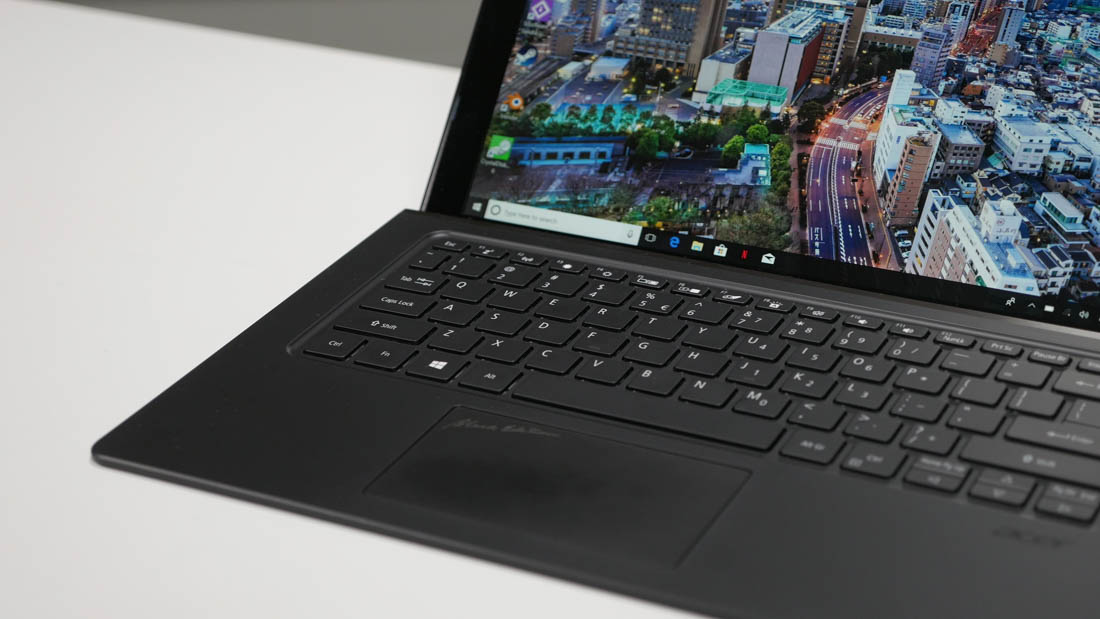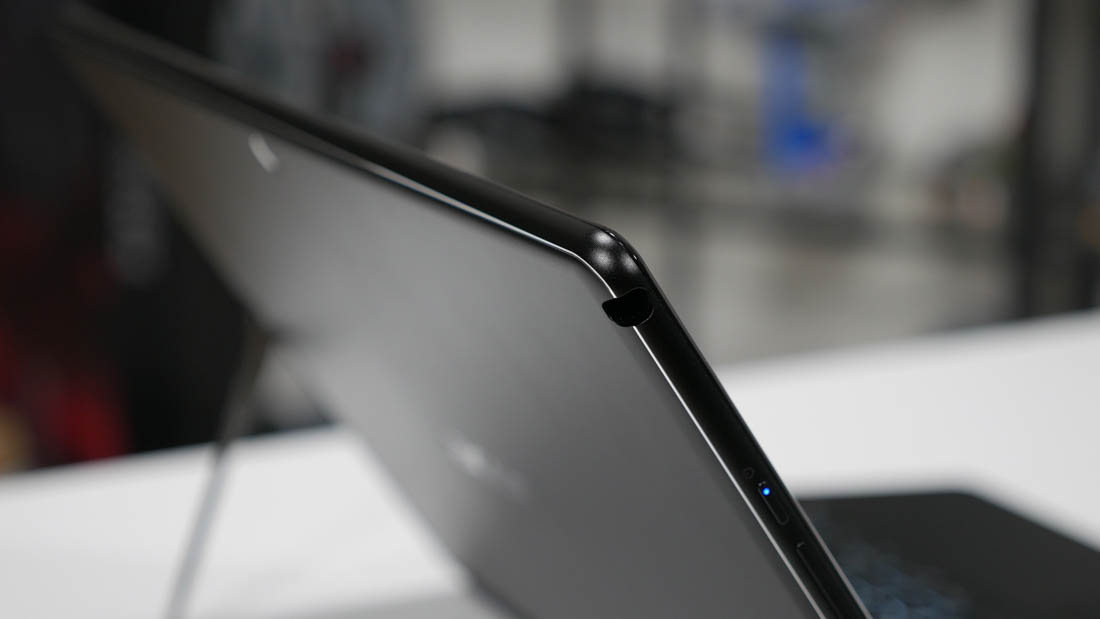Acer's brand new and very interesting Switch 7 is a high-end tablet with a kickstand and detachable keyboard, complete with Black Edition branding. What makes the Switch 7 unique is that it's a fanless 13.5-inch tablet, yet despite what should be obvious thermal constraints, Acer has crammed in both an Intel Core i7-8550U processor along with discrete Nvidia GeForce MX150 graphics.
Discrete GPUs are usually restricted to 15-inch laptops, with the occasional 14-inch unit seen in the wild. So it's a feat in itself that the Switch 7, a much smaller device, contains a discrete GPU. But on top of that, you get an Intel quad-core CPU without any fans, instead using what Acer calls a "dual LiquidLoop" cooling solution to send heat away from these components and distribute it around the chassis.
That's entirely passive cooling for a 15W CPU and around a 25W GPU, all in a 13-inch tablet form factor.
Other base hardware includes 16GB of RAM and a 512GB SSD, along with a 2256x1504 (3:2 aspect ratio) IPS LCD, but just a 35.1 Wh battery. Cramming a discrete GPU into this device has taken its toll in at least one area, and that appears to be the battery capacity.
For now I want to talk about the build quality of the Switch 7. This is a premium priced product at $1700, so I was a tad disappointed with the final build, both tablet and the included keyboard cover.
The materials used are good - smooth glass on the front, metal on the sides and rear - but there are a lot of seams in the construction, particularly around the I/O and around the display, which doesn't make it look or feel as high-end as the best tablet or laptop designs out there. The Microsoft Surface Pro, for example, features a more refined metal design in keeping with its price tag.
The are also a few alignment and symmetry issues with the Switch 7 that you wouldn't get with a better designed product. The webcam, for example, is offset to the right by a large distance for seemingly no good reason. Even worse is the display position and bezels: the right-side bezel is about 2mm larger than the left-side bezel, leaving the display slightly off center.
As soon as I saw the unit I thought something wasn't quite right about the bezels, and after about 10 measurements just to make sure I wasn't hallucinating, I indeed confirmed one bezel is larger than the other. Certainly a bizarre design choice.
The hinged kickstand assembly is a neat concept, in that it automatically pops out the kickstand when the bottom edge of the tablet contacts your desk. There are two buttons located along this bottom edge that release the spring-loaded hinge mechanism, and from there you can adjust the exact angle to your liking. It's a convenient system, as all you have to do is place the tablet on your desk and it's already propped up and ready to use, whether you have the keyboard attached or not.
However the system does have a few significant flaws. The stand itself doesn't look great, at least in my opinion, and the groove it leaves in the rear of the tablet is a dust magnet. After just a few days, dust and dirt had already accumulated in the hinge cavity that's hard to remove or clean without compressed air. You don't get this issue with the flat-kickstand of the Surface Pro.
While you can set an angle for the kickstand, and it can go fairly flat like the Surface Pro, the spring-loaded hinge prevents you from setting an angle more acute than the angle it pops out at. This default angle is suitable for desk work, but there are times I liked to use a more acute angle, particularly in glary environments, which the spring mechanism prohibits.
The other issue is you can't pop out the hinge without pressing both protruding buttons along the bottom edge. This isn't a problem for desk users, but say you want to open up the kickstand on a soft surface like a bed, or on your lap where the buttons might not contact your legs. In this situation activating these buttons is much harder than simply reaching back and flipping out the stand.
That's probably way too much detail on the kickstand, but it is a neat idea that just needs some refinement.
I was much happier with the I/O included on this tablet: a single full-sized USB port along with Thunderbolt 3 and a microSD card slot is pretty decent for a space-limited device, though using a proprietary power connector over USB-C is annoying. The Eve V still has the best I/O of any productivity tablet.
The Switch 7 does include a fingerprint reader on the front next to the display, which exhibits average performance. Further up the edges are the front-facing speakers of a surprisingly decent quality, perhaps due to the limited volume that prevents awful distortions.
The keyboard cover is obviously a key feature of the Switch 7 and it's nice to see it included in the price, unlike with a certain Microsoft product. The cover is a bit hit or miss, using plastic around the keys and an okay-but-not-amazing fabric on the other side.
However the typing experience is good, with a similar tactile feel to most laptop keys, if a bit lighter than normal. There is a bit of flex when typing though not as much as I expected considering the build, and it attaches neatly and effectively to the bottom using pogo pins and magnets.
Perhaps the best feature is the included stylus. It's a Wacom unit without power, yet it supports 4,096 levels of pressure and - best of all - it slots into the body along the top edge. Yes, Acer includes a dedicated stylus slot where many of these devices do not, which makes it hard to lose the pen. For annotating on the go, it's a great solution.


